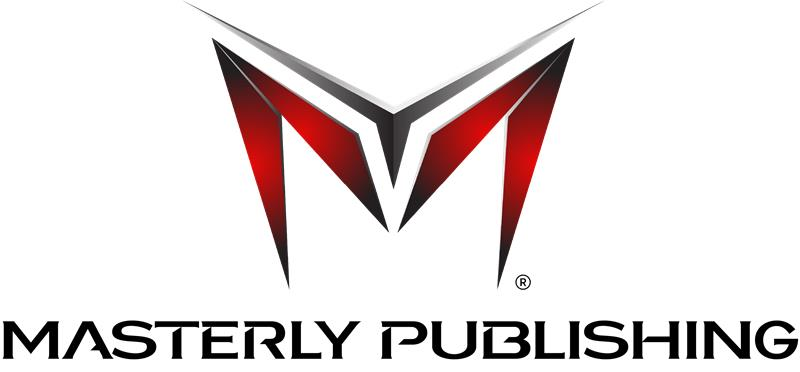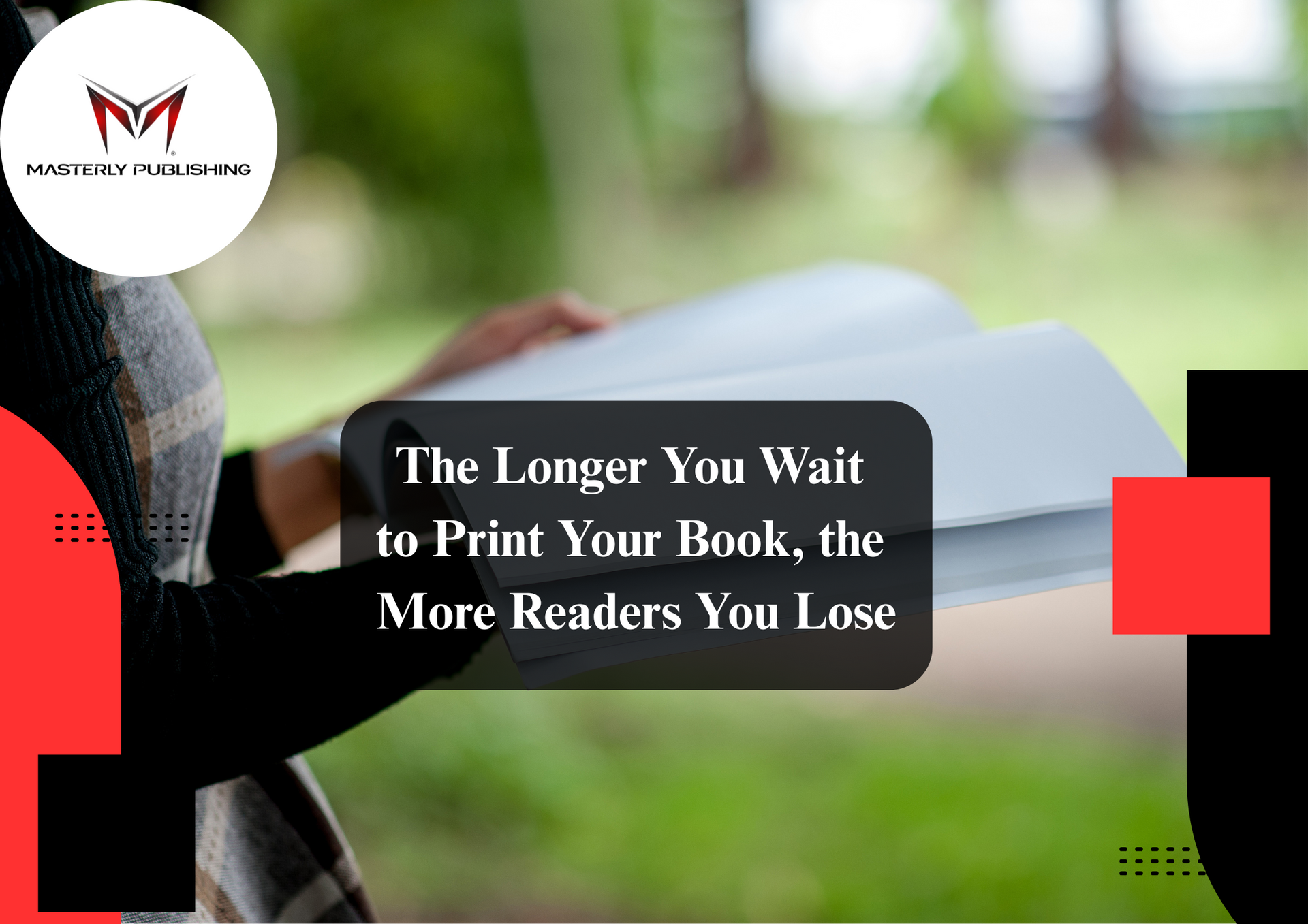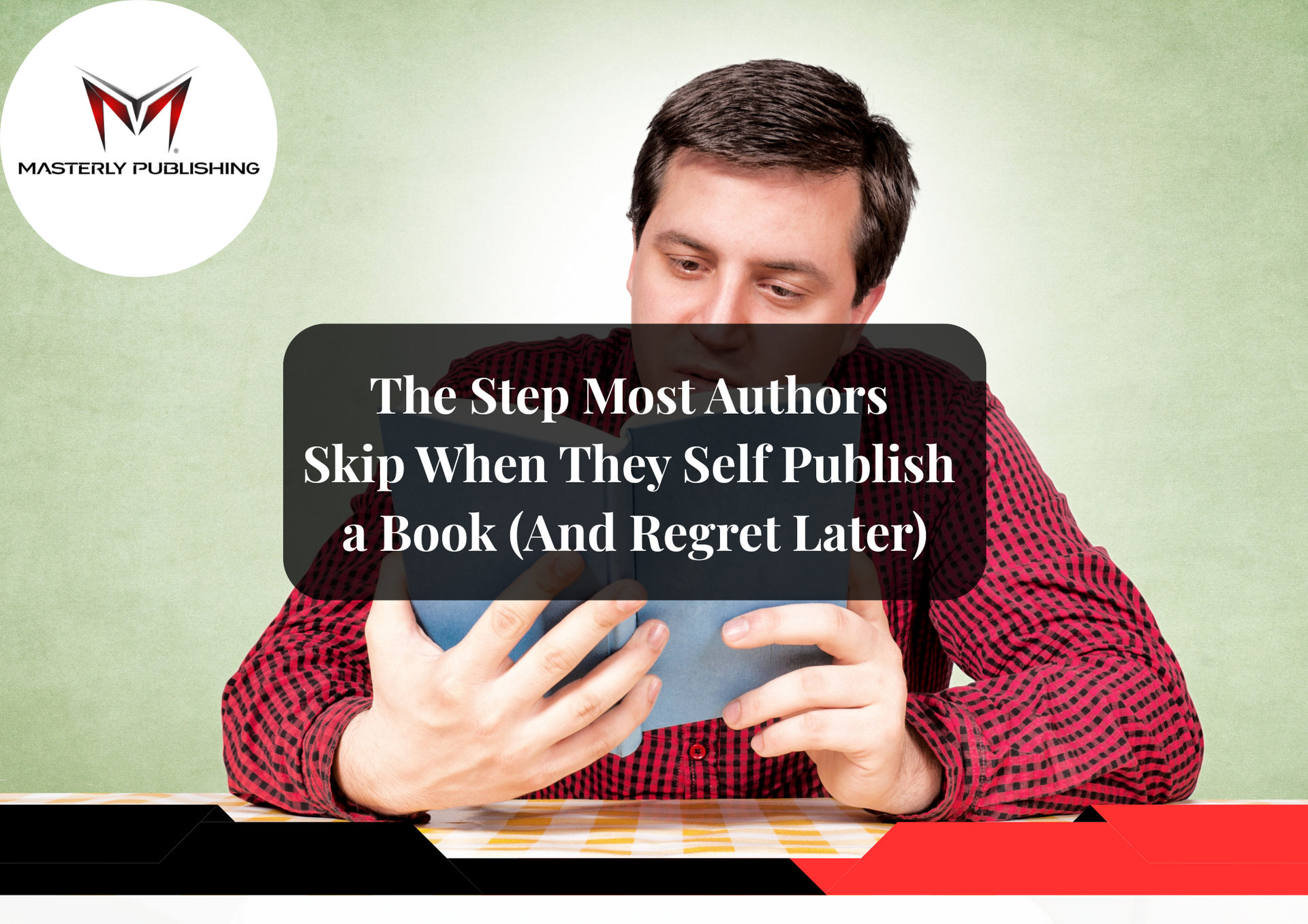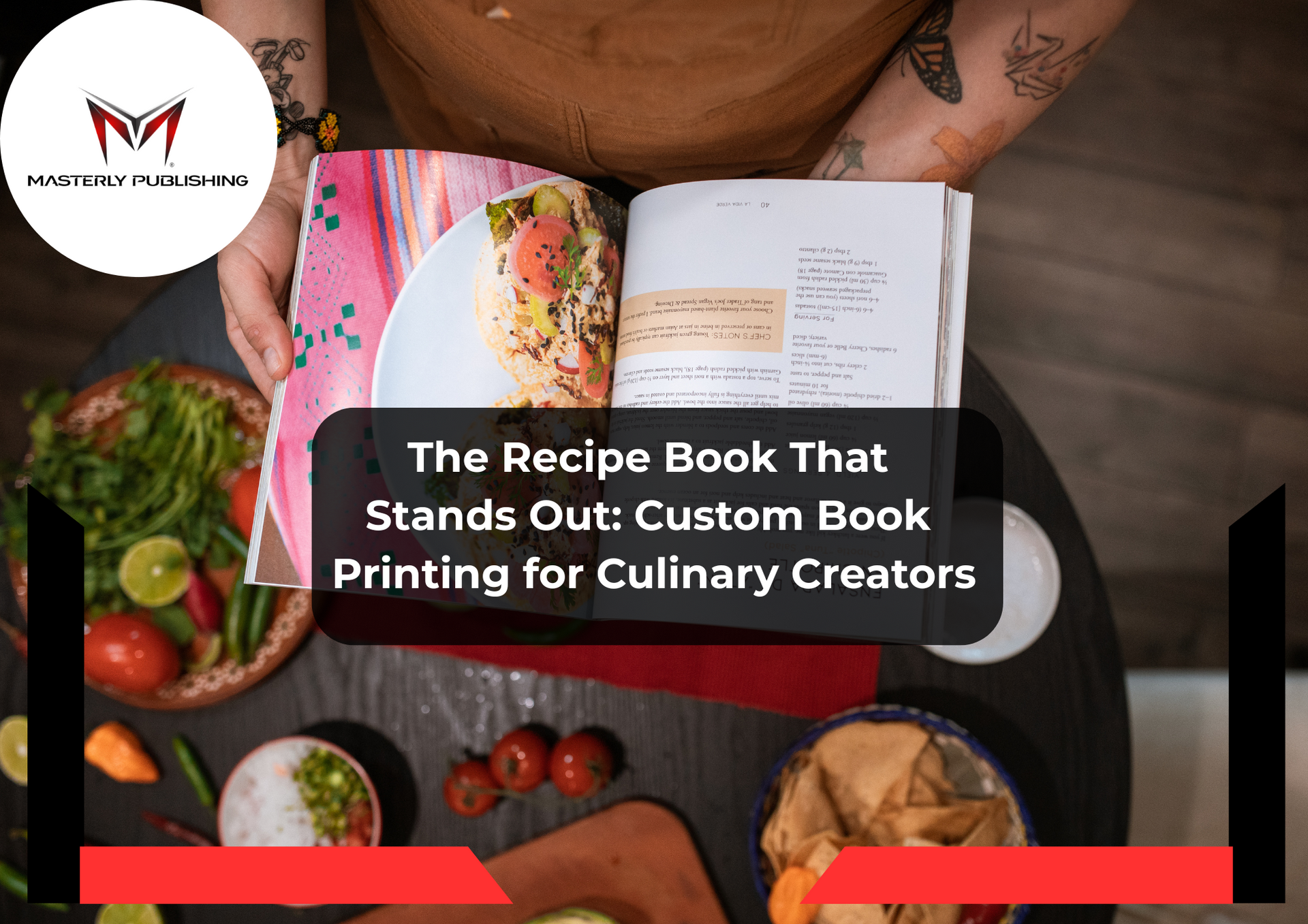A Beginner’s Guide to Self Publishing a Book: Steps to Get Started
The idea of self publishing a book is both exciting and overwhelming for many new authors. Unlike traditional publishing, where the process is handled by a publishing company, self-publishing allows complete creative control over your manuscript, cover, and marketing. However, without the right strategy, your book may struggle to reach potential readers.
At Masterly Publishing, we help independent authors navigate the self publishing process with ease. From book editing to professional cover design and distribution channels, we provide the support needed to ensure your book is market-ready. If you’re ready to publish your book, follow this step-by-step guide to successfully take your manuscript from draft to bookshelf.
Step 1: Finalizing Your Manuscript Before Publishing
Before you can publish your book, your manuscript must be polished and professional. Even the best writers benefit from copy editing and book editing, as small mistakes can turn potential readers away.
Work with a Professional Editor
A professional editor ensures your book is free of grammar errors, awkward phrasing, and inconsistencies. If your book requires deep structural improvements, character development, and pacing adjustments, book editing is essential.
Consider a Manuscript Review
A professional review can highlight strengths and weaknesses in your story, helping you refine your work before publishing. Many self publishing companies offer this service, but working with a team that understands the publishing industry can give you a significant advantage.
Step 2: Choosing a Self Publishing Platform
Once your manuscript is ready, selecting the right publishing platform is crucial. There are many self publishing platforms available, each with its own benefits and limitations.
Popular Self Publishing Platforms
Some of the most well-known platforms include:
- Kindle Direct Publishing (KDP) – Ideal for eBooks and print on demand.
- IngramSpark – Provides access to physical bookstores and libraries.
- Barnes & Noble Press – An option for authors looking to distribute through B&N.
Choosing the right self publishing platform depends on your publishing goals, whether you want global reach, access to bookstores, or the flexibility of multiple platforms.
Step 3: Formatting for Print and Digital
To successfully publish your book, you need to format it correctly for both digital and print formats. Each publishing platform has specific guidelines for:
- Ebook conversion – Ensuring your book looks professional on Kindle, iPads, and e-readers.
- Print on demand – Formatting for paperback or hardcover versions.
- Book printing – Preparing your manuscript for professional printing services.
A properly formatted book prevents issues that may lead to negative reader reviews.
Step 4: Creating a Professional Cover Design
Your book cover is the first thing potential readers notice. A professional cover design can significantly impact book sales, as readers judge books by their covers.
The Elements of a Great Book Cover
A well-designed cover includes:
- A compelling image that reflects the book’s genre.
- Clear, easy-to-read typography.
- A layout optimized for both eBooks and print books.
Working with a professional designer ensures that your book looks polished and appealing across multiple platforms.
Step 5: Writing an Engaging Book Description
Your book description is your sales pitch to readers. It should be clear, engaging, and formatted correctly for online retailers. A strong book description includes:
- A brief but compelling summary of your story.
- A hook that grabs the reader’s attention.
- Keywords to help your book rank on self publishing platforms.
A well-crafted book description increases visibility and encourages more book sold across various distribution channels.
Step 6: Publishing a Book and Distributing It Globally
After your manuscript is polished and formatted, it’s time to self publish your book. Unlike traditional publishing, where authors rely on literary agents, self-publishing allows direct access to global markets.
Self Publishing Service Options
Most self publishing companies offer distribution to platforms like:
- Amazon KDP
- Apple Books
- Kobo
- Barnes & Noble
Some services also provide ISBNs, though it’s recommended to purchase your own ISBN for full ownership.
Step 7: Developing a Marketing Strategy for Book Sales
A solid marketing strategy ensures that your book reaches potential readers. Most self published authors use a combination of:
- Social media platforms (Facebook, Instagram, TikTok)
- An author website to showcase their work
- Email marketing and newsletters
- Paid promotions on online retailers
Your marketing efforts should attract readers and build long-term engagement with your audience.
Step 8: Encouraging Reader Reviews and Increasing Visibility
Reader reviews play a critical role in book promotion. Positive reviews boost credibility and improve ranking on self publishing platforms. Encourage readers to leave honest feedback by:
- Offering advance review copies.
- Engaging with readers on social media.
- Running giveaways and promotions.
Higher visibility leads to more book sales and long-term success.
Step 9: Expanding to Print on Demand and Additional Formats
To maximize your reach, consider print on demand services. This allows you to offer print books without upfront printing costs. Expanding your formats to include audiobooks can also increase book sold across various distribution channels.
Step 10: Scaling Your Writing Career and Publishing More Books
Many independent authors don’t stop at one book. Expanding your writing career means refining your self publishing journey and learning from past experiences. Some authors transition to traditional publishing after proving their success in self-publishing.
Key takeaways for future success include:
- Refining your publishing process.
- Learning from self publishing success stories.
- Continuing to engage with your potential readers.
Masterly Publishing offers guidance throughout the entire process, ensuring that your book reaches its full potential.

Building Your Brand as a Self-Published Author
For many writers, the decision to create a self published book rather than pursue a traditional publisher comes down to control, speed, and ownership. When you self publish your book, you have the freedom to dictate every part of the writing process, from editing to marketing and book distribution.
To maximize your book’s success, it’s important to develop a strong sales strategy that includes:
- A professional ebook cover that attracts readers.
- A well-crafted author bio to establish credibility.
- An own website that serves as a hub for book sales and promotions.
While self-publishing offers flexibility, investing in professional services for book industry insights and marketing ensures your book reaches a wide audience. Even with a budget of a few hundred dollars, smart choices in self publishers, formatting, and promotional efforts can make a significant impact on your book’s success.
Taking Full Control When Publishing Your Own Book
One of the biggest advantages of self-publishing is the ability to retain complete ownership of your own book. Unlike working with a traditional publisher, where rights and creative decisions are often shared, self-publishing allows you to have full authority over the writing process, book cover, formatting, and marketing.
By self-publishing, you decide how your book is edited, priced, and distributed across multiple platforms. This level of control ensures that your vision remains intact while maximizing your book’s reach to potential readers.
How Self Publishers Maintain Control Over Their Books
Unlike traditional publishing, where a publishing company makes key decisions about editing, book printing, and marketing, self publishers have the advantage of full control. This means they oversee everything from book editing and cover design to pricing and book distribution.
For authors who want to successfully publish, working with a trusted self publishing service can provide the professional support needed to compete with traditionally published books.
Many self publishers choose print on demand options to manage costs while expanding their reach across multiple publishing platforms. By taking ownership of the entire self publishing process, authors can create high-quality books that attract readers and generate strong book sales.
The Key Steps to Self Publishing a Book Successfully
For many writers, self publishing a book is an exciting opportunity to bring their stories to life without the restrictions of traditional publishing. Unlike working with a publishing company, self-publishing allows authors to make all creative and business decisions, from book editing to cover design and book distribution.
To successfully publish, authors must follow a structured plan that includes:
- Refining their manuscript through professional book editing.
- Selecting the right self publishing platform for digital and print books.
- Investing in professional cover design to attract more potential readers.
- Implementing a solid marketing strategy to drive book sales.
While the self publishing process requires effort, it provides a unique opportunity for authors to maintain creative control and reach their audience directly. With the right support, self publishing a book can lead to long-term success and the potential for multiple books in the future.

Choosing the Right Self Publishing Companies for Your Book
With so many self publishing companies available, finding the right one can be overwhelming. Unlike traditional publishing, where a publishing company handles the entire process, self-publishing requires authors to make informed decisions about editing, formatting, and book distribution.
Some self publishing companies offer full-service packages, including book editing, cover design, and marketing, while others focus only on printing or digital publishing. The best choice depends on your publishing goals and budget. Many authors opt for print on demand services to minimize upfront costs while ensuring their books remain available on multiple platforms.
By researching and selecting reputable self publishing companies, authors can avoid common pitfalls and maximize their chances of self publishing success. Working with experienced professionals ensures that your book meets industry standards and effectively reaches potential readers.
Understanding Book Printing Options for Self Publishers
One of the biggest decisions in the self publishing process is choosing the right book printing method. Unlike traditional publishing, where a publishing company handles printing logistics, self publishers must decide between print on demand and bulk printing.
- Print on demand (POD) allows authors to have books printed as orders come in, eliminating the need for large upfront costs. This is a popular option for most self published authors because it reduces financial risk.
- Offset printing requires ordering a set number of copies in advance, which can lower costs per book but requires storage and upfront investment.
Choosing the right book printing option depends on your publishing goals, budget, and sales strategy. A well-planned approach ensures that your book is available in print books for readers who prefer physical copies.
Designing a Book Cover That Captures Readers’ Attention
A compelling book cover is one of the most important elements of self publishing a book. Whether you're publishing through self publishing companies or handling the process independently, your cover is the first impression potential readers will have of your work. A poorly designed cover can make even the best book go unnoticed, while a professional book cover can significantly boost book sales.
When designing a book cover, consider:
- A visually appealing image that reflects your book’s genre.
- Clear, easy-to-read typography that stands out in print books and digital formats.
- A design optimized for both eBooks and print on demand services.
Many self published authors invest in professional cover design to ensure their book stands out in a competitive market. A well-crafted book cover not only attracts readers but also conveys the quality and professionalism of your work.
How to Self Publish a Book the Right Way
Understanding how to self publish a book can be overwhelming for first-time authors, but following the right steps ensures a smooth self publishing process. Unlike traditional publishing, where a publishing company handles much of the work, self-publishing puts full control in the author’s hands.
To successfully publish, you need to:
- Edit your manuscript with professional book editing services.
- Design a high-quality book cover that attracts readers.
- Choose the right self publishing platform, such as Kindle Direct Publishing or print on demand services.
- Develop a marketing strategy to drive book sales and engagement.
By following these steps, authors can turn their manuscripts into professionally published books and reach a wide audience through multiple platforms.

Navigating the Self Publishing Process from Start to Finish
The self publishing process involves more than just writing a book—it requires careful planning, editing, formatting, and marketing to ensure success. Unlike traditional publishing, where a publishing company handles much of the work, self-publishing puts the author in control of every step.
From refining your manuscript with professional services to choosing the right publishing platform and preparing for book distribution, each phase of the self publishing process plays a crucial role in reaching potential readers. Whether you’re releasing print books, eBooks, or both, a well-executed strategy can help your book stand out in the competitive book industry.
Understanding the Full Process of Self Publishing a Book
Many aspiring authors assume that self publishing a book is as simple as uploading a file and pressing publish. However, successful self publishing requires careful planning, from editing to formatting and marketing. Unlike working with a traditional publisher, where much of the work is handled for you, self-publishing requires authors to take charge of their writing process, book distribution, and branding.
One major decision self-published authors must make is whether to offer print books, eBooks, or both. While digital formats allow for quick access through self publishing platforms, print books remain a favorite for many readers, providing a tangible product that can be sold through online retailers and bookstores.
If you're ready to turn your manuscript into a self published book, investing in professional services like editing, cover design, and formatting ensures that your book meets industry standards and attracts readers in a competitive marketplace.
The Best Way to Self Publish a Book for Maximum Success
For aspiring authors, finding the best way to self publish a book can mean the difference between a successful launch and a book that struggles to gain traction. Unlike traditional publishing, self-publishing offers complete creative control, but it also requires careful planning to ensure professional results.
The most effective self publishing process includes:
- Investing in professional book editing to ensure a polished manuscript.
- Creating a professional book cover that attracts potential readers.
- Choosing the right self publishing platform, such as Kindle Direct Publishing or print on demand services.
- Building a marketing strategy to increase visibility and book sales.
By following these key steps, authors can navigate the self publishing journey with confidence, ensuring their book stands out in the competitive book industry.

Take the First Step Toward Self Publishing Success
Self publishing a book is an exciting journey, but navigating it alone can be overwhelming. At Masterly Publishing, we provide expert support in book editing, cover design, distribution channels, and marketing strategy to help you achieve your publishing goals.
Whether you're a first-time author or a seasoned writer, we can help you successfully publish and maximize your book sales.
Contact us at (888) 209-4055 to book a free consultation and get started on your self publishing journey today.














